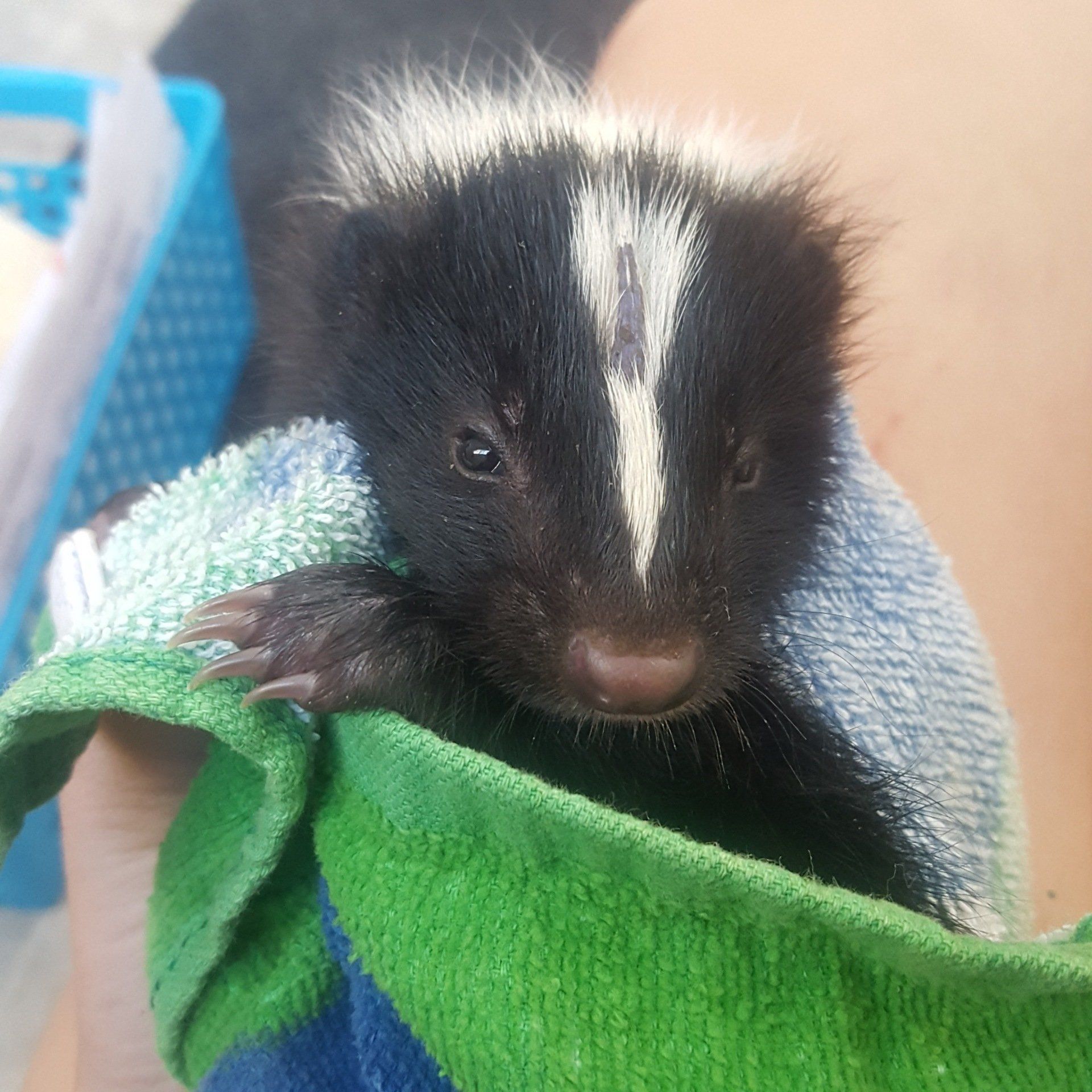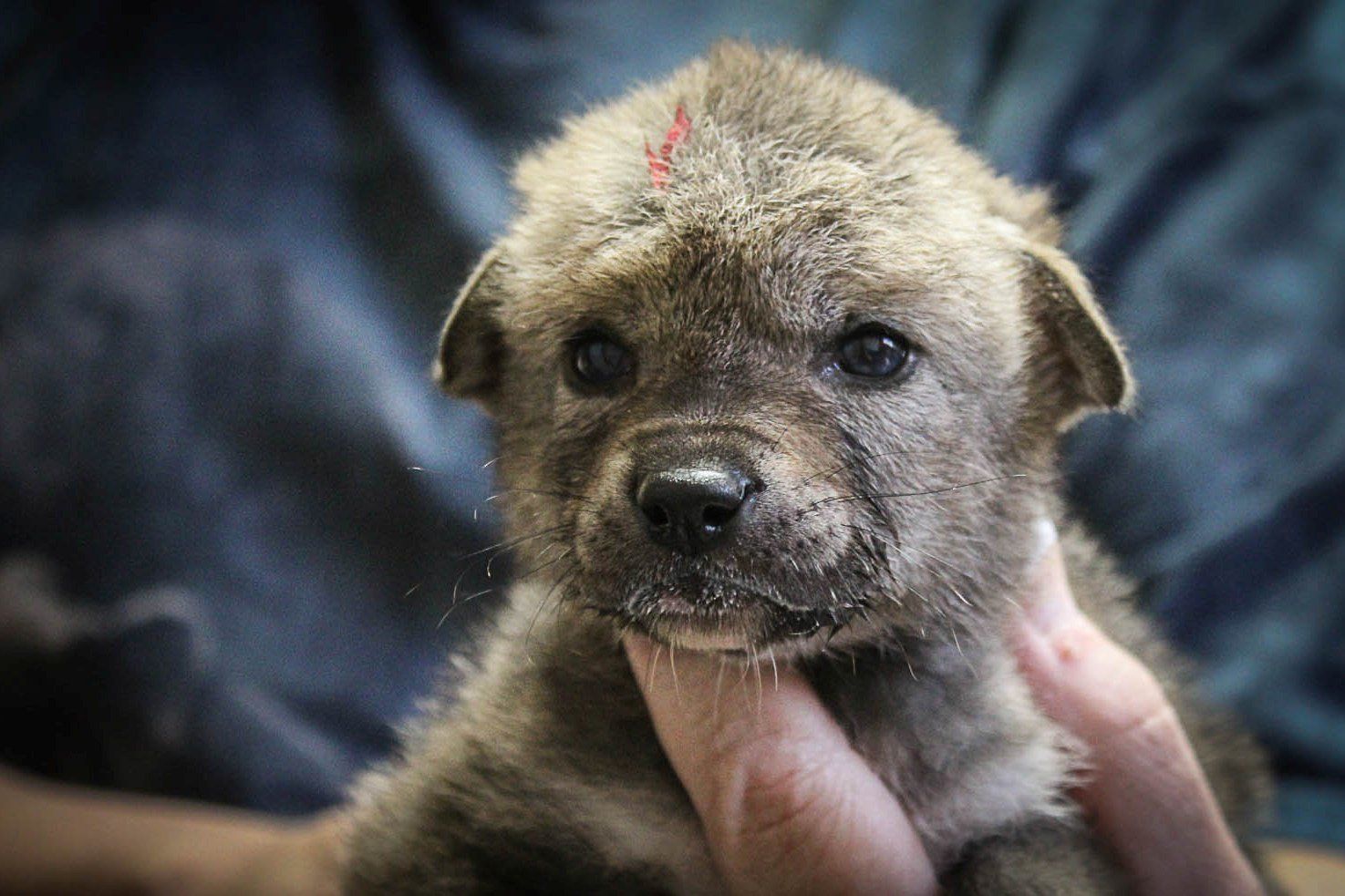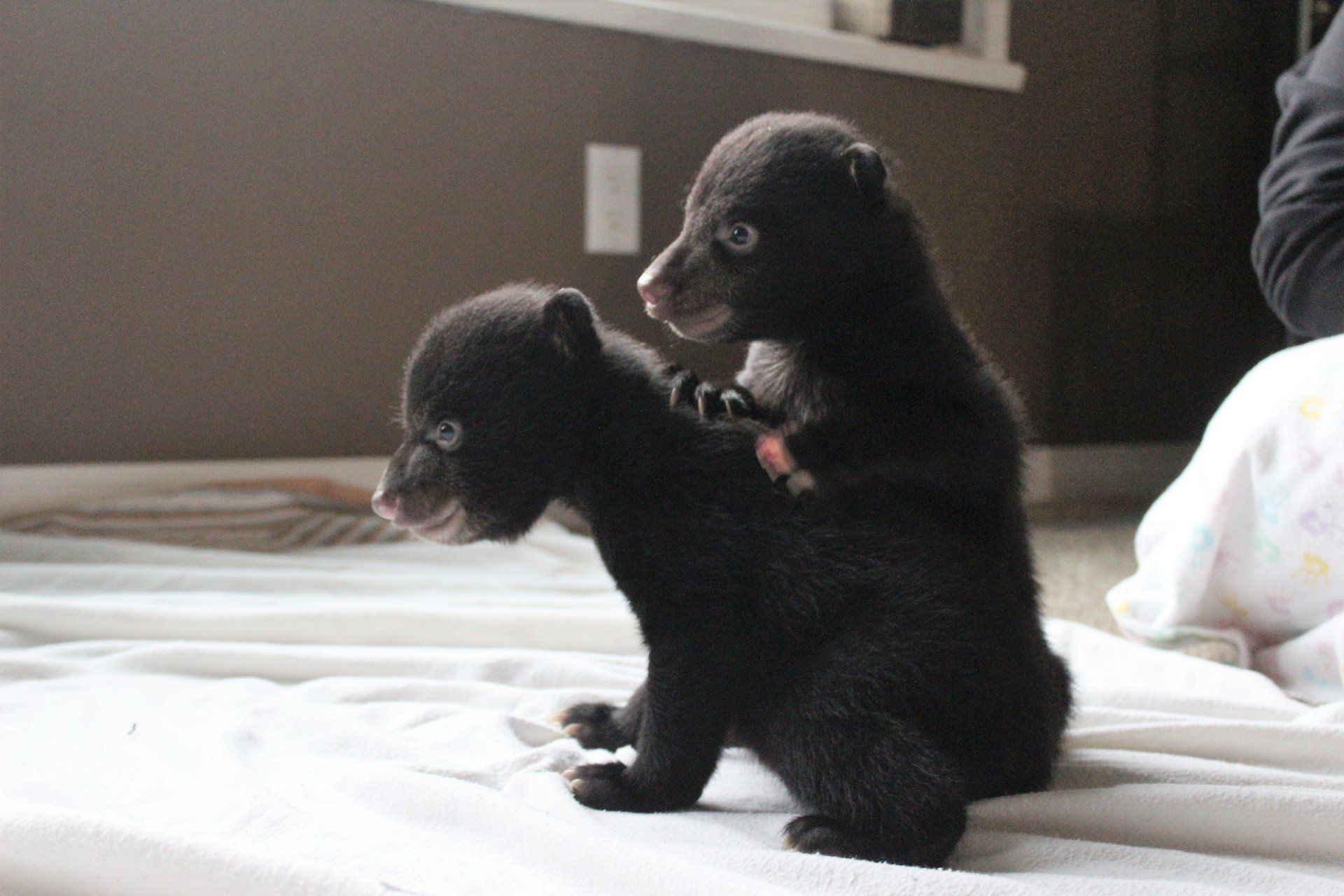Skunks
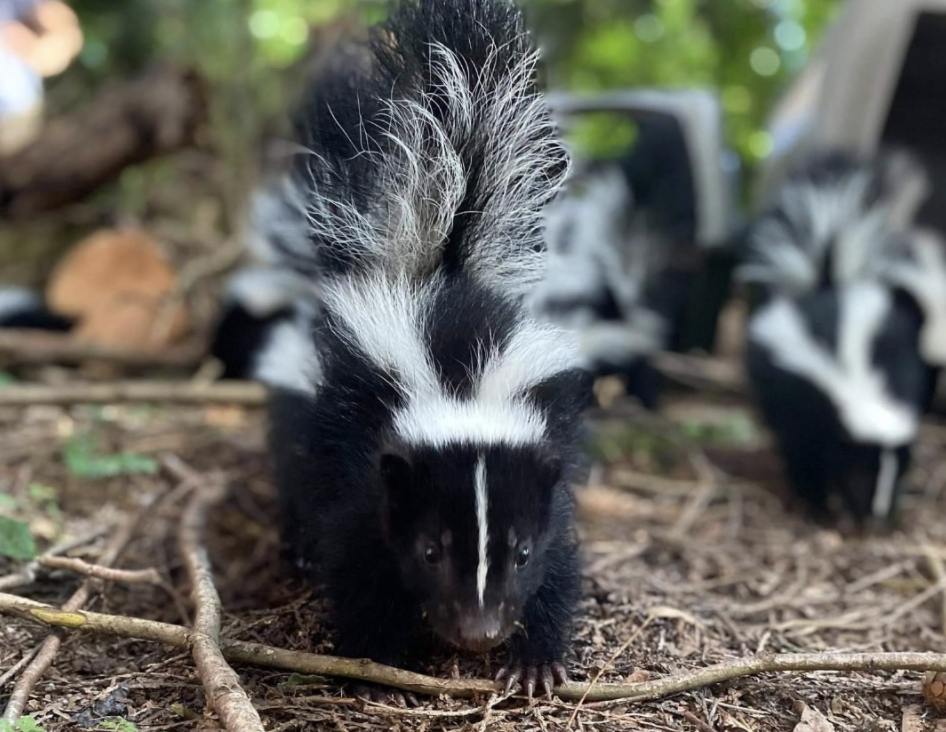
Description
- Skunk species vary in size from about 15.6 to 37 in (40 to 94 cm) long and in weight from about 1.1 lb (0.50 kg) (spotted skunks) to 18 lb (8.2 kg) (hog-nosed skunks).
- They have moderately elongated bodies with relatively short, well-muscled legs and long front claws for digging.
- They have five toes on each foot.
- Although the most common fur color is black and white, some skunks are brown or grey and a few are cream-colored.
- All skunks are striped, even from birth. They may have a single thick stripe across the back and tail, two thinner stripes, or a series of white spots and broken stripes (in the case of the spotted skunk).
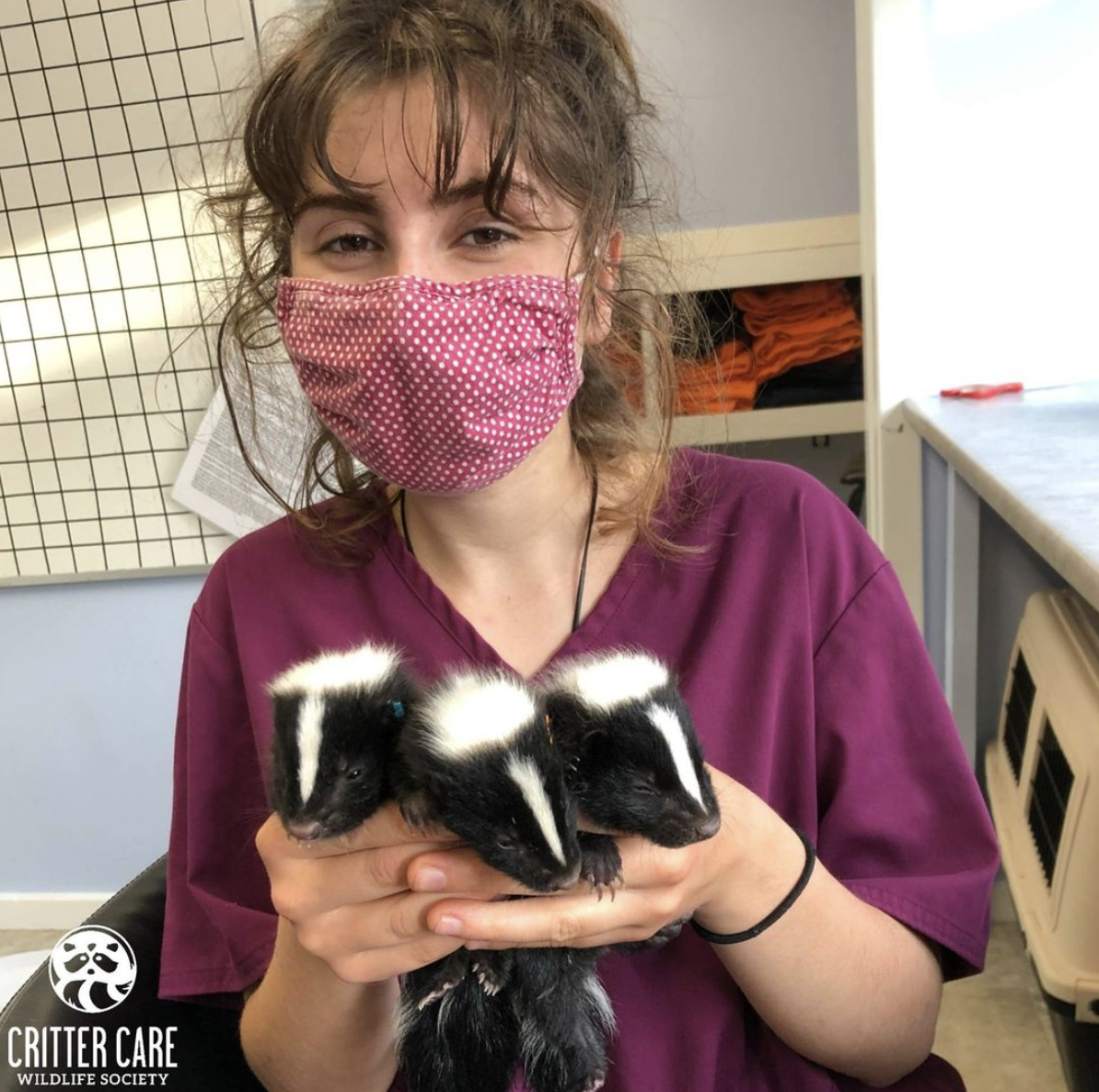
Habitat
Skunks are crepuscular and solitary animals when not breeding, though, in the colder parts of their range, they may gather in communal dens for warmth. During the day they shelter in burrows, which they can dig with their powerful front claws. Males and females occupy overlapping home ranges through the greater part of the year, typically 2 to 4 km2 (0.77 to 1.54 sq mi) for females and up to 20 km2 (7.7 sq mi) for males.
Skunks are not true hibernators in the winter, but do den up for extended periods of time. However, they remain generally inactive and feed rarely, going through a dormant stage. Over winter, multiple females (as many as 12) huddles together; males often den alone. Often, the same winter den is repeatedly used.
Although they have excellent senses of smell and hearing, they have poor vision, being unable to see objects more than about 3 m (10 ft) away, making them vulnerable to death by road traffic. They are short-lived; their lifespan in the wild can reach seven years, with most living only up to a year. In captivity, they may live for up to 10 years.
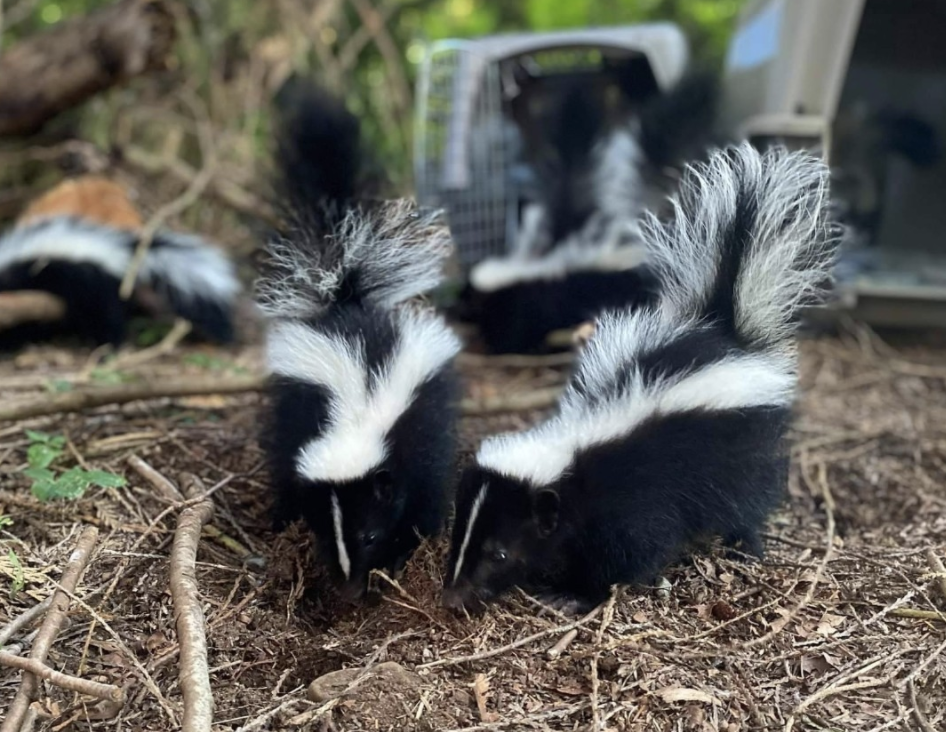
Diet
Skunks are notorious for their anal scent glands, which they can use as a defensive weapon. Skunks have two glands, one on each side of the anus. These glands produce the skunk's spray, which is a mixture of sulfur-containing chemicals which have an offensive odor. A skunk's spray is powerful enough to ward off bears and other potential attackers. Muscles located next to the scent glands allow them to spray with a high degree of accuracy, as far as 3 m (10 ft). The spray can also cause irritation and even temporary blindness and is sufficiently powerful to be detected by a human nose up to 5.6 km (3.5 miles) downwind.

Challenges
Reckless predators attacks on skunks often fail once they are sprayed. The Great Horned Owl is the skunk's only regular predator.
Skunks are common in suburban areas but it is rare for a healthy skunk to bite a human.
Source: https://en.wikipedia.org/wiki/Skunk
Find Out More
Give Today
Sponsor and orpaned animal or project
About Us
Find out who we are
Take Action
Find out how you can help

